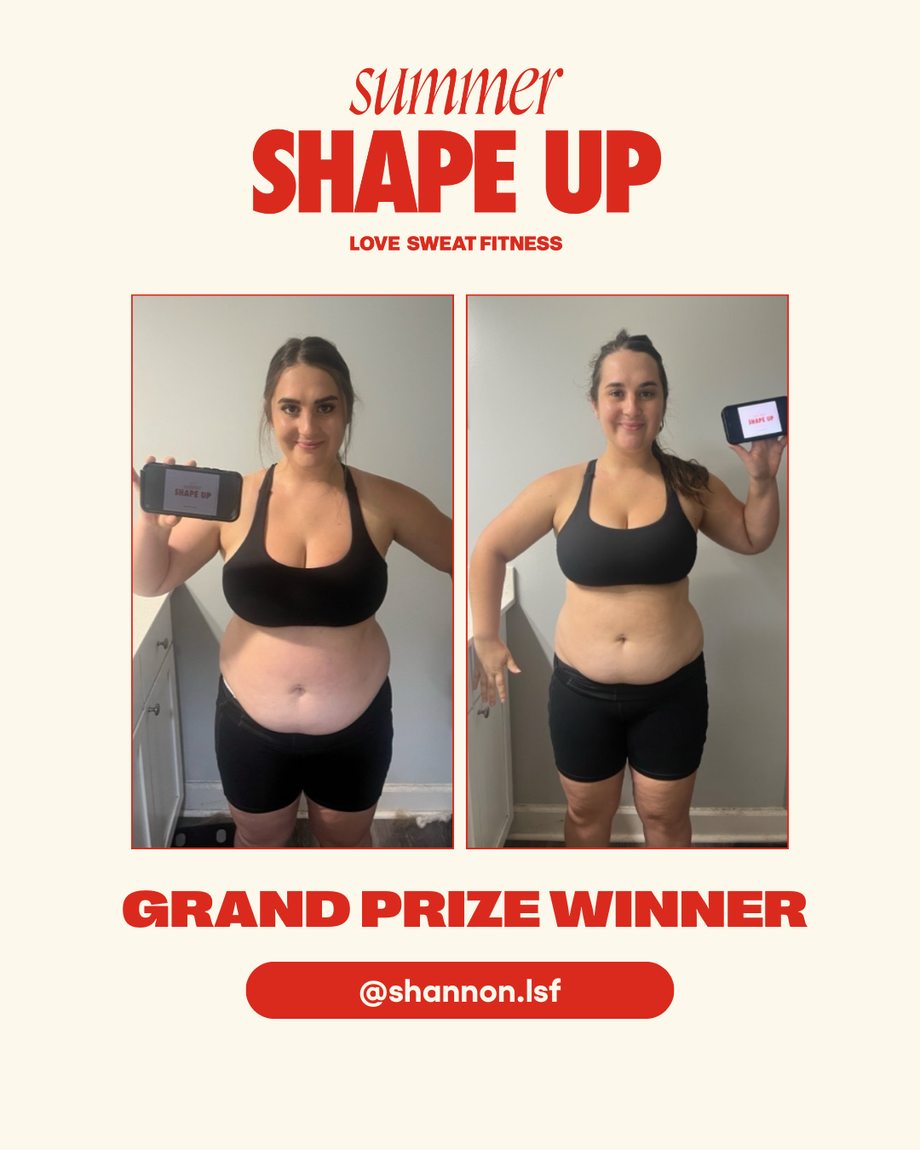How to Measure Fitness Progress. Chasing your fitness goals is anything but easy, and we need all the encouragement we can get!
But when we rely so heavily on our bathroom scale to tell us how well we're doing, the results can leave us discouraged and confused. Good news, girl! That pesky little square isn't always the best tool for measuring your progress, and there are things that can give you a more well-rounded idea of how you're doing in your pursuit of your goals.

Focus on fat loss, not weight loss.
We expect the scale to tell us how much fat we have or don't have, but remember: scales are objectively focused on weight, not fat! Of course as you work towards your goals, sometimes the scale will show it, but there are also plenty of times where, despite your hard work, the number on the scale only goesup.#WTF
The reason for this, is that as you sweat more and become more fit, your body builds more muscle. You may have heard in school that muscle weighs more than fat, and girl, ain't that the truth! Muscle is a more dense and compact substance than fat (and boosts your metabolism as well, ahem), so even though you might be gainingweight,you're probably still losingfat.A perfect way to measure your progress in this area would be to get our a tape measurer and jot down a few of your measurements. Re-measure every couple of weeks, and watch how those numbers go down!
And girl, pleeeeaaaase don't be afraid to gain muscle. Muscle does not equal bulk. Instead, it boosts your metabolism, burns more calories, and is good for your overall health. Sound like a super tool!? It is!!!
Measure your resting heart rate.
One of the biggest benefits to increasing your fitness level is the changes to your overall health. A great measurement of your overall system is your resting heart rate. A normal resting heart rate is 60-100 BPM, while competitive athletes range from 40-60 BPM. About every month or so, measure your resting heart rate first thing in the morning, before you get out of bed, and write it down. Your heart rate will balance out at some point, as a resting heart rate can actually be too low, but set a goal for yourself to be in a certain range according to your age and weight, and work towards it!
Look in the mirror!
The proofmaybe in the numbers, but it's sooo healthy to value how you feel when you look in the mirror as well! Progress might take its time showing up sometimes, and you are undoubtedly your harshest critic. But that only means that when you start to actually see progress when you look in the mirror or get a glimpse of yourself in the store window (don't worry, nobody saw you look), you can trust that! Recognizing the change in how you look, rather than obsessing over numbers, is such an empowering and healthy way to measure your progress. It's also fabulous motivation to keep pushing forward! And, if you're not seeing it yet, don't worry – you will!
Reflect.
Seeing progress means continually pushing yourself, and that can be discouraging sometimes. Which is why the LSF Appis a perfect tool for measuring progress! When you look back on how you felt during and after specific workouts, or throughout your day in general, you'll start to see a change. That change might be a particularly difficult sweat sesh getting easier each time you did it, an improvement in your energy levels and mood, or the ability to level up and do more! These little victories can so often be lost in the struggle upward, but reflecting on them in your fitness journal is so crucial to maintaining motivation to keep going, and being encouraged by how far you've already come!
Not only do the numbers on the scale depend onsomany things (salt intake, time of day, water retention, etc), but it might not be showing you the most accurate picture of how you're doing! Hopefully with this good news in mind, and your new tools for measuring progress, you can move forward in crushing your goals, and be assured of the incredible results you're achieving. You've got this girl, and we've got you!










Join the discussion